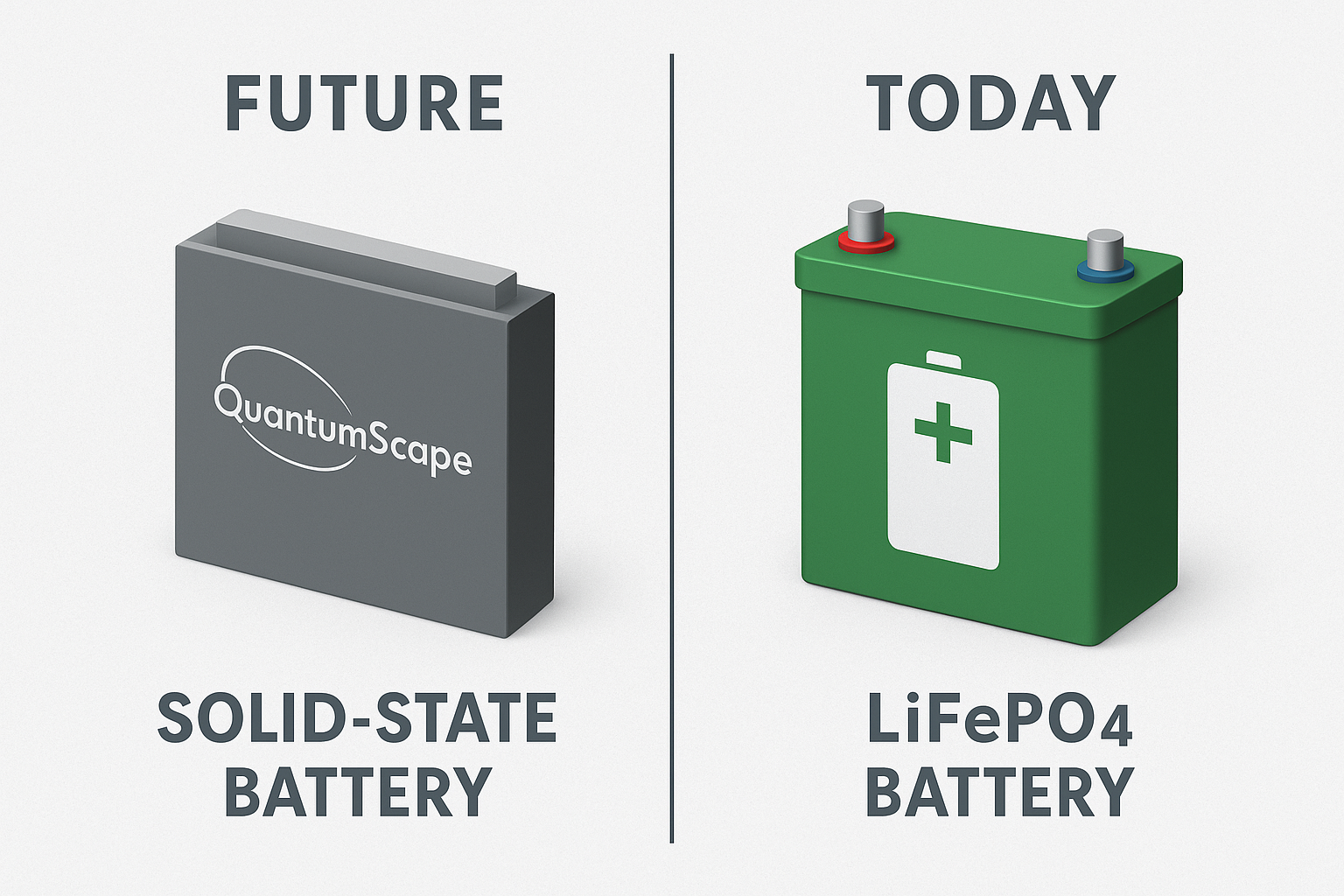
QuantumScape (NYSE: QS) has become one of the most intriguing names in the race to revolutionize the battery industry, particularly in the context of electric vehicles (EVs). Its promise centers on a single, game-changing goal: developing commercially viable solid-state batteries that can outperform today’s lithium-ion technology. But who is QuantumScape, and what is the story behind this ambitious company?
The Origins: From Stanford Lab to Startup
QuantumScape was founded in 2010 in San Jose, California, by Jagdeep Singh, Tim Holme, and Professor Fritz Prinz. The genesis of the company came out of collaborative research at Stanford University, where the founders saw immense untapped potential in solid-state battery chemistry. Unlike traditional lithium-ion batteries, which use a liquid electrolyte, solid-state batteries use a solid electrolyte, promising higher energy density, faster charging, and improved safety.
Singh, an accomplished entrepreneur with prior success in tech startups, saw the opportunity to commercialize academic innovation. Alongside Holme and Prinz, he set out to solve the core technical hurdles that had made solid-state batteries an elusive dream for decades: dendrite formation, limited cycle life, and scalability.
Early Backing and Strategic Partnerships
From the outset, QuantumScape’s approach set it apart from most battery startups. The company attracted significant early funding, with investors ranging from venture capital firms to automotive giants. The most prominent and game-changing partnership came in 2012, when Volkswagen invested in QuantumScape, signaling the auto industry’s keen interest in next-generation battery solutions. Over the years, Volkswagen’s stake in the company has grown, with billions committed to joint development and future manufacturing.
As the company operated in stealth mode for much of its early history, details about its progress were scarce. However, as the EV market gained momentum globally, curiosity and expectations surrounding QuantumScape mounted.
Technological Ambitions: The Solid-State Solution
The heart of QuantumScape’s pitch is its proprietary solid-state battery technology. Conventional lithium-ion batteries have limitations in energy density and safety due to the flammable liquid electrolyte. By replacing this with a solid ceramic separator and using a lithium metal anode, QuantumScape’s design aims to deliver batteries that are safer, last longer, and offer greater range.
Key technical claims include:
- Greater Energy Density: Enabling EVs to travel farther on a single charge.
- Rapid Charging: The potential to charge to 80% in less than 15 minutes.
- Safety Improvements: Reducing fire risks thanks to non-flammable solid materials.
- Cycle Life: Promising batteries that can last for hundreds of thousands of miles without significant degradation.
While these claims are transformative, the path to mass production is fraught with technical and engineering challenges. QuantumScape has spent years in R&D, advancing prototypes from the laboratory to pre-pilot lines, aiming for automotive-grade validation.
Going Public: The SPAC Wave and Market Volatility
In November 2020, QuantumScape went public through a merger with a special purpose acquisition company (SPAC), Kensington Capital Acquisition Corp. This move, which resulted in the company trading under the ticker (NYSE: QS), brought massive attention and a surge in market capitalization—briefly making QuantumScape one of the most valuable pre-revenue battery companies in the world.
This listing allowed QuantumScape to raise substantial capital to fund further development and scaling of its technology. However, as with many SPAC-driven public debuts, the initial euphoria was followed by volatility. Skeptics pointed to the challenges of scaling solid-state technology from promising prototypes to mass-produced cells fit for vehicles, highlighting the risk of delays and technical setbacks.
Progress, Partnerships, and Skepticism
Since going public, QuantumScape has provided periodic updates on its technical progress, including performance results from its “single-layer” and “multi-layer” prototype cells. The company has announced significant milestones—such as demonstrating stability across hundreds of charge-discharge cycles and constructing pilot production lines at its QS-0 facility in California.
Volkswagen remains a close partner, with plans to integrate QuantumScape batteries into future EV models if targets are met. Other auto manufacturers and suppliers have expressed interest in the technology, although QuantumScape’s commercial roadmap is measured and cautious, with mass-market vehicle integration likely years away.
Despite the promise, QuantumScape has faced scrutiny from analysts and some segments of the investment community. The company’s timeline for commercial production has been pushed back more than once, and some observers worry about the feasibility of achieving cost-effective manufacturing at scale.
The Road Ahead: Opportunity and Challenge
QuantumScape’s future is deeply tied to the broader EV transition and the technological arms race for better batteries. If it can deliver on its promises, the implications could be enormous—not only for EVs, but also for grid storage and portable electronics.
The company’s next steps involve scaling its production facilities, validating multi-layer cells, and conducting real-world automotive testing with partners like Volkswagen. The stakes are high: a breakthrough would give QuantumScape a leading edge in a multi-trillion-dollar industry, but the technical hurdles remain formidable.
Conclusion
QuantumScape stands at the intersection of cutting-edge research, industrial ambition, and investor excitement. With a decade-long history of innovation and high-profile partnerships, it represents one of the most ambitious bets in the battery world. Whether it will become the linchpin of the next-generation battery revolution or another cautionary tale of technological overpromise remains to be seen. As the world accelerates toward electrification, the company’s journey will be closely watched by automakers, investors, and anyone interested in the future of energy.
Disclaimer: This article is for informational purposes only and does not constitute investment advice. Please conduct your own research before making investment decisions.





